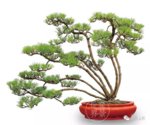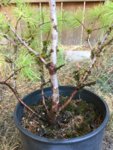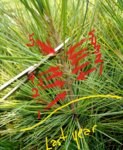Maloghurst
Chumono
Hello all, I came across these neglected JWP at a local nursery. No graft and I’m I’m guessing 3-6 years old. I paid $10 for the smaller ones and $20 for the larger. I thought they would be good project to learn JWP on. The lower portions had a lot of moss and dead branching on the trunks. These are some of the better looking ones.
I’ve read tons of threads on here about these trees so I have a pretty good idea of how to proceed and don’t want to put anyone out by making them repeat all the basic knowledge of JWP. But I do want to verify I’m proceeding correctly to give them the best chance of becoming good bonsai in 25 years! This is how i am proceeding with the trees.
1.
A.The bigger tree has a lot of potential because it has 3 strong branches coming straight out of the base and these I will let grow freely as sacrificial branches.
B.I have pond baskets that I will repot the trees into in early spring.
C.I will wire some movement into them in September.
D.Fertilize in late September.
E.Request advice on how to keep foliage close to trunk and induce backbudding on the rest of the tree.
I have learned a lot about maintaining JWP but not so much about creating quality prebonsai.
The rest of the growth is all pretty leggy. Are these all destined to be litarati? I read a lot of post saying these will almost never or rarely ever get back-budding.
I am going to get more but these were the best of the bunch. Some other ones only had foliage half way up and the top. These I might get and use raffia and create a lot of movement for litarati style.
Thank you for the help.
Mike
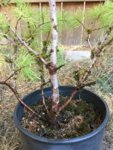
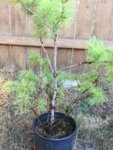
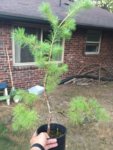
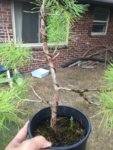
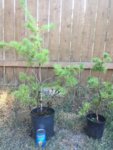
I’ve read tons of threads on here about these trees so I have a pretty good idea of how to proceed and don’t want to put anyone out by making them repeat all the basic knowledge of JWP. But I do want to verify I’m proceeding correctly to give them the best chance of becoming good bonsai in 25 years! This is how i am proceeding with the trees.
1.
A.The bigger tree has a lot of potential because it has 3 strong branches coming straight out of the base and these I will let grow freely as sacrificial branches.
B.I have pond baskets that I will repot the trees into in early spring.
C.I will wire some movement into them in September.
D.Fertilize in late September.
E.Request advice on how to keep foliage close to trunk and induce backbudding on the rest of the tree.
I have learned a lot about maintaining JWP but not so much about creating quality prebonsai.
The rest of the growth is all pretty leggy. Are these all destined to be litarati? I read a lot of post saying these will almost never or rarely ever get back-budding.
I am going to get more but these were the best of the bunch. Some other ones only had foliage half way up and the top. These I might get and use raffia and create a lot of movement for litarati style.
Thank you for the help.
Mike






